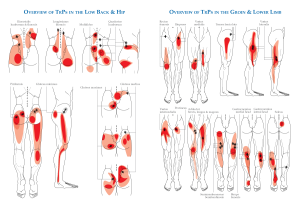Scheuermann’s Disease: What You Should Know

Scheuermann’s disease, also known as Scheuermann’s kyphosis, is a condition that affects the spine, leading to a pronounced forward curvature, usually in the upper back.
The spine consists of 33 vertebrae, each separated by spongy discs that act as shock absorbers and allow for smooth movement. In a healthy spine, these vertebrae are rectangular and neatly stacked. However, in individuals suffering from Scheuermann’s disease, the affected vertebrae become wedge-shaped, disrupting this alignment.
Scheuermann’s disease usually develops during periods of rapid skeletal growth, like puberty. The front side of the spine doesn’t grow as quickly as the back side, leading to the irregular, wedge-shaped vertebrae and the characteristic forward curvature.
While the exact cause of Scheuermann’s disease isn’t clear, it’s believed to involve a mix of genetic and environmental factors. A family history of the disease increases your risk.
Signs and Symptoms of Scheuermann’s Disease
Scheuermann’s disease is mostly seen in teenagers and can present as a more severe deformity than postural kyphosis. Signs and symptoms include:
- Rigidity. Unlike postural kyphosis, Scheuermann’s disease curve is rigid and cannot be corrected voluntarily.
- Pain. Back pain can range from mild to severe. The pain is often worse with physical activity or prolonged periods of sitting or standing.
- Visible curvature. The upper or thoracic spine may curve up to 40 degrees or more. This can result in a hunched appearance, and in some cases, the head may rest forward on the chest.
- Loss of height. A rounded posture can lead to a loss of height.
- Muscle fatigue. As muscles compensate for the spine’s curvature, the back may feel more tired or strained.
- Compensatory changes. The body may respond with unnatural curves in the lower spine, tight hamstrings, or, in severe cases, scoliosis.
Scheuermann’s Disease Diagnosis
Diagnosing Scheuermann’s disease typically involves physical exams and imaging such as:
- Palpation
- Adam’s forward bend test
- Range of motion testing
- X-rays to confirm the severity and exact location of the curvature
Treatment Options for Scheuermann’s Disease
Conservative treatment options such as physical therapy and back braces aim to reduce the severity of the curve and prevent the progression of the disease. Tailored exercises can strengthen back muscles and improve posture. In younger patients, bracing can help correct the spine’s alignment during growth. Pain management might include medications and lifestyle adjustments to reduce discomfort.
In more severe cases, surgery such as may be necessary. It’s important to note that surgery is generally considered a last resort and focuses more on pain management than cosmetic correction.
Living with Scheuermann’s Disease
Understanding that Scheuermann’s Disease is manageable is vital for managing your diagnosis. Maintaining a supportive environment is essential, especially for teenagers, who may feel self-conscious about their appearance.
Regular medical follow-ups, physical therapy, and being mindful of posture can significantly improve symptoms. Engaging in regular physical activity and exercise can help maintain back strength and flexibility.
When to Seek Medical Help
Talk to a neurosurgeon or physiatrist if you or your child is experiencing back pain, postural changes, or other symptoms such as persistent discomfort, decreased flexibility, or difficulty moving.
Early intervention is key in managing spinal changes effectively and preventing potential complications. Remember, self-diagnosis or delaying medical care can lead to worsening symptoms or additional health problems.
Your doctor can offer a proper diagnosis and develop a treatment plan. with one of our specialists today!
The post appeared first on .




